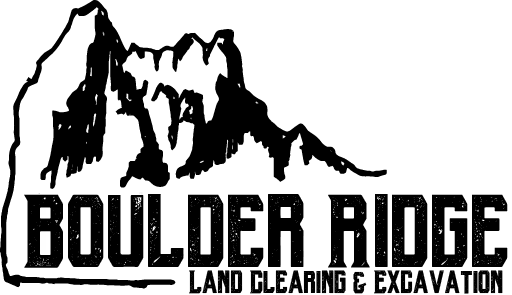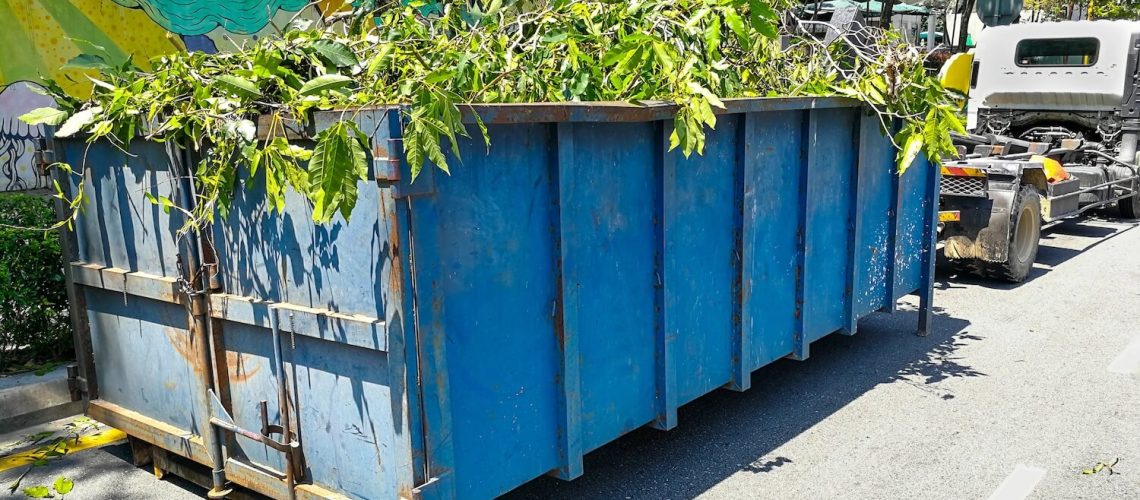Debris removal might seem like a straightforward task, but beneath the surface lies a host of potential dangers that can turn a simple job into a hazardous and costly endeavor. Whether you’re dealing with fallen branches after a storm, overgrown brush, or construction waste, the temptation to handle debris removal yourself is strong. After all, it’s often perceived as a task that anyone can tackle with a bit of elbow grease. However, there are significant risks associated with DIY debris removal that can endanger your health, safety, and finances.
In this article, we will explore the hidden dangers of DIY debris removal and make a case for hiring professional services.
The Risks of DIY Debris Removal
Physical Injuries
One of the most immediate dangers of DIY debris removal is the risk of physical injury. Handling debris often involves heavy lifting, climbing ladders, and using potentially dangerous tools such as chainsaws and chipper shredders.
- Heavy Lifting: Moving large branches or piles of debris can lead to muscle strains, sprains, and back injuries. Improper lifting techniques or overexertion can exacerbate these risks. For example, lifting a heavy log without proper support can lead to acute back pain or long-term spinal issues.
- Tool Use: Chainsaws, in particular, are notorious for causing accidents. According to the U.S. Consumer Product Safety Commission (CPSC), over 36,000 people are injured by chainsaws each year. Accidents often result from improper handling, lack of protective gear, or mechanical failures. The risk of severe cuts or even amputations is significant, especially for those without proper training.
- Climbing and Heights: Debris removal often requires climbing ladders or using lifts to reach higher branches or rooftops. Falls from heights are a leading cause of injuries and fatalities. Many homeowners lack the necessary safety equipment, such as harnesses and safety lines, increasing their risk of falls.
Environmental Hazards
Debris removal is not just about moving items from one place to another; it often involves dealing with hazardous materials that can pose environmental risks.
- Hazardous Materials: Old construction debris might contain asbestos or lead, both of which are harmful when disturbed. Asbestos fibers can cause serious lung conditions, including asbestosis and mesothelioma, while lead exposure can result in poisoning and neurological damage. Proper handling and disposal of these materials are crucial to avoid health risks.
- Toxic Plants and Wildlife: Fallen trees or overgrown brush can hide toxic plants such as poison ivy or poison oak. These plants can cause severe allergic reactions and skin irritation. Additionally, debris can attract wildlife, including pests like ticks and snakes, which pose health risks.
- Pollution: Improper disposal of debris can lead to environmental pollution. For instance, burning debris can release harmful chemicals into the air, while dumping it in unauthorized areas can contribute to soil and water contamination.
Property Damage
The process of removing debris carries the risk of causing unintentional damage to your property.
- Landscaping Damage: Heavy equipment or large piles of debris can harm lawns, garden beds, and other landscaping features. For instance, using a truck or loader to move debris might compact soil or damage delicate plants.
- Structural Damage: Improper handling of debris near structures can result in damage to fences, driveways, and even the foundation of your home. For example, using a chainsaw near a building can create vibrations that might crack walls or destabilize structures.
- Utility Damage: Debris removal can sometimes involve moving or cutting through utility lines, including electricity, water, or gas lines. Accidental damage to these lines can lead to serious issues such as power outages, flooding, or gas leaks, all of which require immediate professional attention.
Regulatory Compliance Issues
Many areas have specific regulations regarding debris removal and disposal. DIY enthusiasts might not be aware of local ordinances, permits, or environmental regulations, potentially leading to fines and legal trouble.
- Permits and Regulations: Some jurisdictions require permits for certain types of debris removal, particularly for large-scale projects or hazardous materials. Failing to obtain the necessary permits can result in fines or legal action.
- Proper Disposal: Regulations often dictate how different types of debris must be disposed of. For example, certain materials might need to be taken to specialized disposal facilities. Non-compliance with these regulations can lead to fines and environmental damage.
- Reporting Requirements: In some cases, homeowners might be required to report the removal of certain types of debris, such as hazardous waste, to local authorities. Neglecting these reporting requirements can result in legal complications.
Cost Overruns
What starts as a seemingly simple DIY project can quickly become a financial burden. Unforeseen issues such as equipment breakdowns, injury treatments, or additional debris removal needs can escalate costs.
- Equipment Costs: DIY debris removal often requires renting or purchasing specialized equipment. These costs can add up, especially if the equipment is needed for an extended period. Additionally, maintaining and repairing equipment can be costly.
- Injury Costs: Medical expenses for injuries sustained during debris removal can be significant. Emergency room visits, follow-up treatments, and potential long-term rehabilitation can strain your finances.
- Additional Debris: Unforeseen complications, such as discovering additional debris or encountering hazardous materials, can increase the scope of the project and the associated costs.
The Case for Hiring Professional Debris Removal Services
Expertise and Experience
Professional debris removal services bring a level of expertise and experience that is difficult to match with DIY efforts.
- Specialized Knowledge: Professionals are trained to handle a wide range of debris removal tasks, from simple yard clean-ups to complex industrial waste management. Their knowledge ensures that the job is done efficiently, safely, and in compliance with all relevant regulations.
- Problem-Solving Skills: Experienced professionals are adept at identifying and addressing potential issues that might arise during the debris removal process. This includes managing hazardous materials, navigating difficult terrain, and dealing with unexpected challenges.
- Efficiency: Professionals have the skills and experience to complete debris removal tasks quickly and efficiently. Their ability to work systematically and utilize advanced techniques reduces the time and effort required compared to DIY approaches.
Advanced Equipment and Techniques
Professionals use specialized equipment designed for various types of debris and tasks.
- Industrial-Grade Equipment: Equipment such as chippers, cranes, and trucks enables professionals to handle large-scale debris removal projects efficiently. This equipment is often more powerful and effective than the tools available to DIYers.
- Safety Features: Professional-grade equipment is designed with safety features that help prevent accidents and injuries. For example, commercial chippers often have guards and safety mechanisms to protect operators.
- Efficiency: Advanced equipment allows professionals to complete debris removal tasks more quickly and effectively. This includes the ability to manage large volumes of debris and navigate challenging environments.
Safety First
Safety is a top priority for professional debris removal companies. They follow strict safety protocols to protect both their workers and your property.
- Protective Gear: Professionals wear appropriate safety gear, including helmets, gloves, eye protection, and hearing protection. This gear helps prevent injuries from debris, tools, and equipment.
- Training and Protocols: Professional debris removal companies provide their workers with comprehensive training on safety protocols and best practices. This includes proper handling of tools, equipment, and hazardous materials.
- Safety Standards: Adherence to safety standards and regulations is a fundamental aspect of professional debris removal services. This ensures that the job is completed without compromising the health and safety of workers or property.
Environmental Responsibility
Professionals are well-versed in environmental regulations and best practices for disposing of debris.
- Proper Disposal: Professionals ensure that hazardous materials are handled and disposed of correctly, minimizing environmental impact. This includes following regulations for the disposal of materials such as asbestos, lead, and chemicals.
- Recycling and Repurposing: Many debris removal companies have systems in place for recycling or repurposing debris. This contributes to sustainable waste management and reduces the overall environmental footprint of the project.
- Compliance with Regulations: Professional services are knowledgeable about local, state, and federal regulations regarding debris removal and disposal. They ensure that all legal requirements are met, reducing the risk of fines and legal issues.
Time and Cost Efficiency
While hiring professionals might seem like an added expense, it often proves to be cost-effective in the long run.
- Quick Turnaround: Professionals complete debris removal tasks quickly and efficiently, allowing you to move on to other projects or activities. This is particularly beneficial if you have a tight timeline or multiple tasks to manage.
- Reduced Risk of Damage: Professional services are less likely to cause damage to your property or surrounding areas. This reduces the need for costly repairs or additional work.
- Predictable Costs: Professional services often provide clear and upfront pricing, reducing the risk of unexpected costs. This transparency helps you budget for the project and avoid financial surprises.
Insurance and Liability
Reputable debris removal companies carry insurance that covers potential damages and injuries.
- Liability Coverage: Insurance coverage protects you from financial responsibility in the event of accidents or property damage during the debris removal process. This means that if something goes wrong, the cost of repairs or medical expenses is covered by the company’s insurance.
- Worker’s Compensation: Professional companies provide worker’s compensation insurance for their employees. This covers medical expenses and lost wages if a worker is injured on the job, ensuring that you are not held liable for these costs.
- Peace of Mind: Knowing that the company you hire is insured and has the necessary coverage provides peace of mind. You can be confident that any issues that arise will be handled professionally and that you are protected from potential liabilities.
Conclusion
DIY debris removal might seem like a cost-effective and straightforward solution, but it carries hidden dangers that can compromise your health, safety, and property. The physical risks, environmental hazards, potential for property damage, regulatory issues, and financial implications all underscore the importance of considering professional services.
By hiring experienced debris removal professionals, you not only ensure that the job is done safely and efficiently but also benefit from their expertise, advanced equipment, and adherence to environmental and safety standards. In the end, investing in professional debris removal services can save you time, money, and stress, allowing you to enjoy a cleaner, safer environment without the risks associated with DIY efforts.

